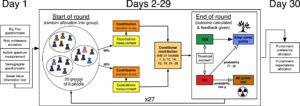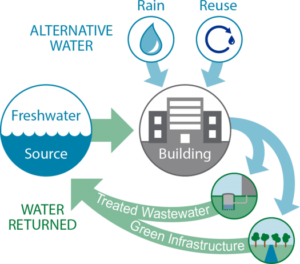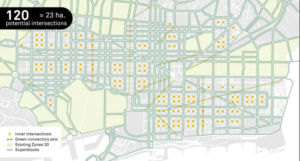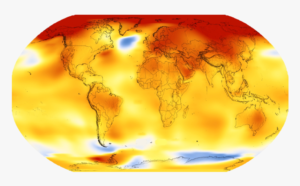In this section we present the scientific publications and the technical reports resulting from our research.
Evidence from a long-term experiment that collective risks change social norms and promote cooperation
Evidence from a long-term experiment that collective risks change social norms and promote cooperation

ABSTRACT
Social norms can help solve pressing societal challenges, from mitigating climate change to reducing the spread of infectious diseases. Despite their relevance, how norms shape cooperation among strangers remains insufficiently understood. Influential theories also suggest that the level of threat faced by different societies plays a key role in the strength of the norms that cultures evolve. Still little causal evidence has been collected. Here we deal with this dual challenge using a 30-day collective-risk social dilemma experiment to measure norm change in a controlled setting. We ask whether a looming risk of collective loss increases the strength of cooperative social norms that may avert it. We find that social norms predict cooperation, causally affect behavior, and that higher risk leads to stronger social norms that are more resistant to erosion when the risk changes. Taken together, our results demonstrate the causal effect of social norms in promoting cooperation and their role in making behavior resilient in the face of exogenous change.
Authors:Aron Szekely, Francesca Lipari, Alberto Antonioni, Mario Paolucci, Angel Sánchez, Luca Tummolini & Giulia Andrighetto
A Tale of three cities: Climate heterogeneity
A Tale of three cities: Climate heterogeneity

ABSTRACT
Professor Dolado has developed much of his professional career in three cities: Zaragoza, Oxford and Madrid. This fact, together with the recent appearance of literature relating climate with human behavior, has inspired us to analyze a set of relevant climate change issues linked to these areas, particularly any possible heterogeneity. The novel methodology proposed in Gadea and Gonzalo (2020a) for analyzing a wide range of characteristics of the temperature distribution (converting them into time series objects), instead of focusing solely on the mean, allows us to carry out this analysis . Using this methodology, we can identify local warming patterns within the global warming phenomenon of different types and intensities. The results show that there is a clear warming process in the three areas. The two Spanish cities (Zaragoza and Madrid) have many similarities but Oxford fits into a different type of warming category. The former are characterized by higher trends in the upper quantiles than in the lower, an increase in dispersion, acceleration and an “upper amplification” with respect to the mean. In Oxford, the type of climate change is differ- ent, displaying higher trends in the lower quantiles, a weak negative trend in dispersion,“lower amplification” and a more attenuated acceleration in recent decades. There is no doubt that a better knowledge of local warming heterogeneity is recommendable for the design of more effective mitigation policies. The influence of the climate on human behavior and, specifically, on Professor Dolado’s personality, takes us into lesser-known regions which are left for the reader to discern.
Authors: María Dolores Gadea Rivas y Jesús Gonzalo
Towards zero water consumption in solar tower power plants
Towards zero water consumption in solar tower power plants

ABSTRACT
Important efforts are dedicated to reduce water use in the power generation sector. In this paper the use of a dry Heller cooling system is proposed to diminish the water consumption of a concentrated solar tower power plant. The Heller system is an indirect cooling system where the exhaust steam from the turbine is condensed in a direct contact heat exchanger. Part of the condensate and cooling water are pumped to the feed water heaters while the rest is pumped to the dry cooling tower. In this particular case a natural draft dry cooling tower is employed.
The detailed cycle of the power block and the cooling system have been modeled. The results indicate an increase of the energy production by almost 6% compared to a mechanically draft dry cooling system and a reduction of the annual energy production of less than 3.7% compared to a wet cooling system. Furthermore, it has been found that this cooling system is able to reduce almost 1.4·106 m3 of water per year, which makes it an attractive choice especially in arid regions.
A cost model has been presented to determine the equivalent water price that makes profitable the use a Heller system (Water price =1.96″$”/m3).
Authors: Carolina Marugán-Cruz, S. Sánchez-Delgado, J. Gómez-Hernández, D. Santana
Barriers to the circular economy in European small and medium-sized firms

ABSTRACT
The concept of the circular economy (CE) is currently gaining impetus as a way to move towards sustainable, low-carbon, resource-efficient, and competitive econo- mies. However, despite the potential benefits of CE activities, their implementation remains relatively rare. We use a cross-sectional survey of European small and medium-sized firms (SMEs) to identify the main barriers firms face to promote the CE, focusing specifically on the following: those related to a lack of resources (human and financial) and capabilities (expertise) and those related to the regulatory frame- work (administrative procedures and the costs of meeting the regulations). Our results indicate that it is the complexity of administrative/legal procedures and the costs of meeting regulations/legal standards that constitute the most significant bar- riers, whereas the lack of human resources is also perceived to be an obstacle by firms engaged in CE activities. Those obstacles may be considered revealed barriers, and it is only when the firms become involved in these activities that they actually perceive them. Furthermore, when we consider the breadth of CE activities, adminis- trative procedures and regulations once again emerge as the most significant obsta- cles. Finally, we stress the need to distinguish between different CE activities given that the perception of barriers differs substantially across these activities. Firms undertaking a disruptive innovation redesigning products and services to minimize the use of materials are more likely to perceive all barriers as important. However, firms implementing such activities as minimizing waste, replanning energy usage, and using renewable energy only perceive those obstacles related to administrative pro- cedures and regulations.
Authors: José García-Quevedo, Elisenda Jové-Llopis, Ester Martínez-Ros
Mobility Infrastructures in Cities and Climate Change: An Analysis Through the Superblocks in Barcelona

ABSTRACT
Cities are key actors in the fight against climate change since they are major sources of greenhouse gas (GHG) emissions while at the same time they experience the negative impact of this phenomenon. Mitigating and adapting to climate change requires fundamental changes in urbanism and city automobile trac. Superblocks, a grid of blocks and basic roads forming a polygon, approximately 400 by 400 m, are one of the instruments for such changes. These type of city Superblocks represent a new model of mobility that restructures the typical urban road network, thereby substantially reducing automobile trac, and accordingly GHG emissions, while increasing green space in the city and improving the health and quality of life of its inhabitants. Furthermore, the Superblocks do not require investment in hard infrastructures, nor do they involve demolishing buildings or undertaking massive development; they are in fact very low-tech urbanism. The city of Barcelona has been implementing Superblocks as one of the measures to combat climate change with very positive results. The paper analyzes the concept of the Superblock and its relation with climate change in cities. Along these lines, it analyzes the pioneer experience of Barcelona in the development and implementation of the Superblocks, as a radical plan aimed at taking back the streets from cars. The role of political power and institutional leadership has been key in societal acceptance and the achievement of tangible results. But there are also obstacles and drawbacks in the development of these types of Superblocks, such as the necessity to redesign the collective transport network so that car trac can truly be reduced in cities, the possible negative influence on trac going in and out of the city, the lack of visible advantages if they are not implemented in the entire city, the risk of gentrification in the areas with Superblocks, public opposition, and opposition from certain sectors of the business community.
Authors: Ivan López, Jordi Ortega, Mercedes Pardo
Trends in distributional characteristics: Existence of global warming

ABSTRACT
What type of global warming exists? This study introduces a novel methodology to answer this question, which is the starting point for all issues related to climate change analyses. Global warming is defined as an increasing trend in certain distributional characteristics (moments, quantiles, etc.) of global temperatures, in addition to simply examining the average values. Temperatures are viewed as a functional stochastic process from which we obtain distributional characteristics as time series objects. Here, we present a simple robust trend test and prove that it is able to detect the existence of an unknown trend component (deterministic or stochastic) in these characteristics. Applying this trend test to daily temperatures in Central England (for the period 1772– 2017) and to global cross-sectional temperatures (1880–2015), we obtain the same strong conclusions: (i) there is an increasing trend in all distributional characteristics (time series and cross-sectional), and this trend is larger in the lower quantiles than it is in the mean, median, and upper quantiles; (ii) there is a negative trend in the characteristics that measure dispersion (i.e., lower temperatures approach the median faster than higher temperatures do). This type of global warming has more serious consequences than those found by analyzing only the average.
Authors:María Dolores Gadea Rivas, Jesús Gonzalo
Grounding Social Foundations for Integrated Assessment Models of Climate Change

ABSTRACT
Integrated Assessment Models (IAMs) are commonly used by decision‐makers in order to derive climate policies. IAMs are currently based on climate‐economics interactions whereas the role of social system has been highlighted to be of prime importance on the implementation of climate policies. Beyond existing IAMs, we argue that it is therefore urgent to increase efforts in the integration of social processes within IAMs. For achieving such a challenge, we present some promising avenues of research based on the social branches of economics. We finally present the potential implications yielded by such social IAMs.
Authors: Jean-Denis Mathias, Marko Debeljak, Guillaume Deffuant, Arnaud Diemer, Florian Dierickx, Jonathan F. Donges, Ganna Gladkykh, Jobst Heitzig, Georg Holtz, Wolfgang Obergassel, Francine Pellaud, Angel Sánchez, Aneta Trajanov, Nuno Videira.

